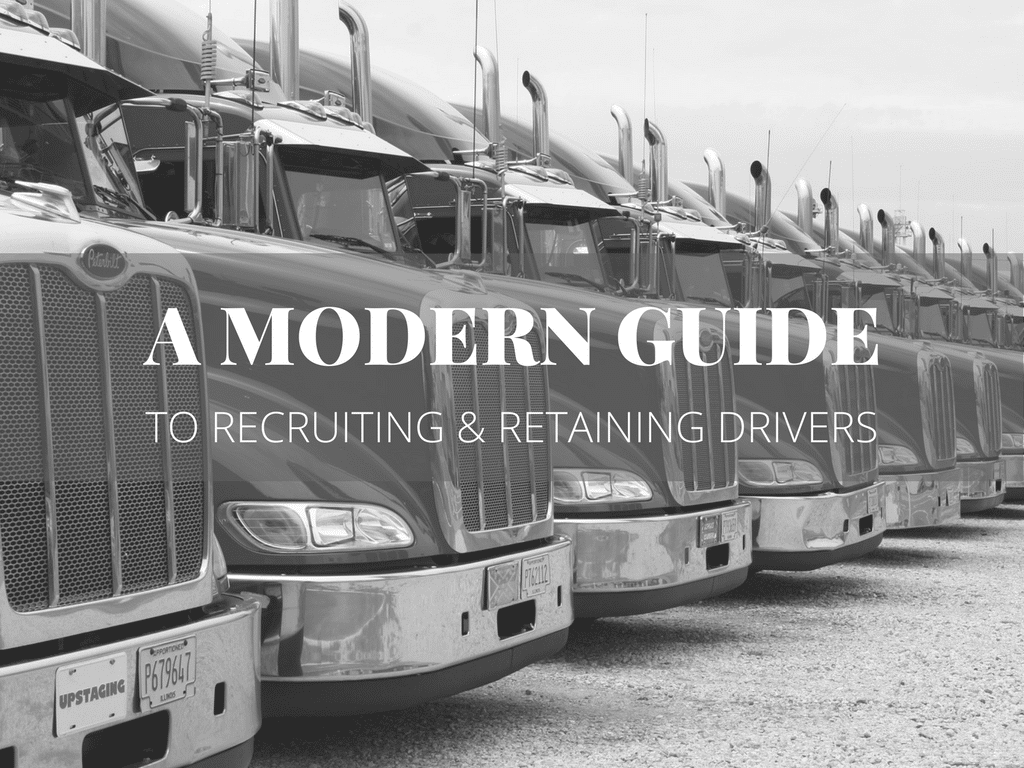A Modern Guide to Recruiting & Retaining Drivers
“I quit!”
These words are inconvenient for any employer. Employee turnover is costly. The Centre of American Progress estimates that a turnover costs 213% of the departing employee’s salary.
How is it this expensive? Costs include lost productivity, time to recruit and train, and harm to company culture. Turnover is especially costly in the trucking industry where there is a shortage of drivers.
In fact, by 2020, Canada is projected to have a supply and demand gap of 33,000 drivers.
Age Gap. The average age for drivers is 46. The industry is struggling to replace aging drivers with younger drivers.
Labour Intensity. Trucking often requires long and unpredictable hours, which increases the difficulty of filling the position.
Employee Turnover. Trucking has a 20-30% turnover rate in Canada.
Key #1: Find New Drivers by Evolving Recruitment Tactics.
Businesses traditionally create job postings and wait on drivers to reply. The challenge, however, is that younger drivers are less likely to be recruited through traditional means. Since retiring drivers need to be replaced, the key for future success is to connect with young drivers.
63% of large trucking companies are attracting young drivers by using digital media. Some techniques include:
Using Search Engine Optimization to Increase Web Traffic
SEO is a fancy word for cutting in front of the line when someone searches for words related to a business. A proven tactic to boost SEO is to consistently publish blog articles with industry keywords.
Creating a Landing Page
Prospective drivers should be greeted by a web page that speaks to them. This page should sell the job opportunity by creating a non-generic message. Some of the most powerful landing pages include video links and driver stories.
Focus on Social Media
Winning employers out-compete other companies by creating positive messages on social media. Effective social media pages tell a story instead of just advertising job posts. Here is a video that teaches these fundamentals.
Key #2: When Recruiting Drivers, Money Talks.
Money makes a big difference. It is the leading factor when choosing a driving job, according to 43% of drivers.
That’s why it’s important to research industry standards and to offer a competitive salary. The most competitive offers can also include benefits such as performance based incentives, health programs, and driver appreciation events.
Key #3: Make New Drivers Feel Like Family.
While compensation is a leading factor in choosing a job, it is not a leading factor for driver turnover. The biggest reason for turnover is fair treatment.
The most important time for building relationships and for reducing turnover is within the first 3 months. The best way to secure loyal drivers is to establish a family-like environment.
Key #4: Train & Monitor How Drivers Should be Treated.
Similarly to making a first impression, businesses must stay consistent. Drivers who feel disrespected are going to leave.
Recruitment directors agree that feeling disrespected comes down to basic controllable things including:
- Overpromising companies benefits
- Asking drivers for their truck number instead of addressing them by name
- Answering “it’s not my job” when drivers ask driver managers for help
Recruitment directors recommend training driver managers. For example, the “it’s not my job” fiasco could be avoided by teaching driver managers whose job it would be and how to relay the question to that individual.
After training, it is also recommended to record and review conversations to ensure drivers feel respected. As some businesses found out, some of these conversations were disappointingly disrespectful – similar to Sara Bittorf’s experience on “Undercover Boss”.
Key #5: Recognize & Reward the Best Drivers.
It’s human nature to seek rewards for performance. If John is a safe and efficient driver, he might be thinking, “how am I getting rewarded?”.
A hot trend in employee engagement is gamifying the environment. Some businesses monitor driver performance and set up scorecards. These scorecards are used to identify and reward top drivers with prizes such as bonuses or days off.
What are the results of gamifying the driving experience? 89% of businesses agreed that this program would improve their engagement.


